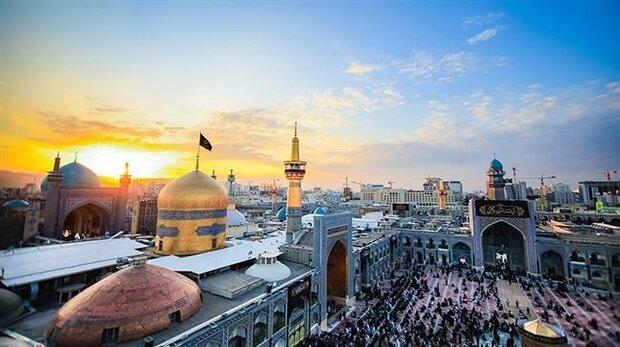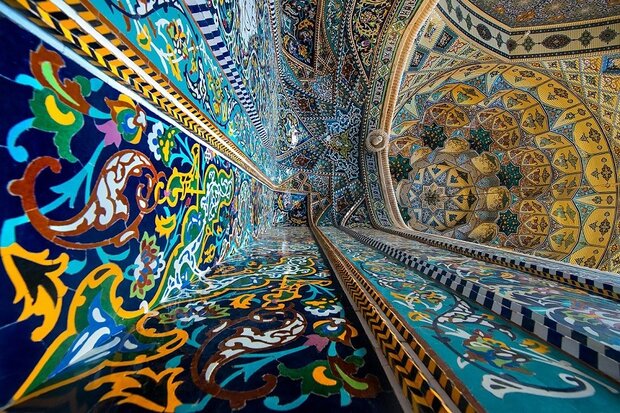Today coincides with the martyrdom of Imam Reza (AS), the 8th Shia Imam. The following report briefly reviews the life of Imam (AS) from birth to martyrdom.
Ali ibn Musa al-Rida, also known as Imam Reza, was a descendant of the Prophet Muhammad (PBUH), and the eighth Imam in Twelver Shia Islam, succeeding his father, Imam Musa al-Kazim (AS).
The Martyrdom of Imam Reza is observed every year on the 30th day in the Islamic month of Safar. Many Muslims from across the world do a pilgrimage on this day to Imam's holy shrine in Iran.

Life of Imam Reza
Imam Reza (AS) was born on Thursday or Friday, Zul-Qa'dah 11 in the year 148 AH in Medina, located in today's Saudi Arabia.
His beloved father Imam Musa-ibn-Jafar (AS) named him Ali. He was divinely entitled al-Reza (meaning that Allah and His messenger were deeply pleased with him) and his agnomen was Abul Hasan.
His grand era of Imamat began in 183 A.H. when he was thirty-five years old and he held that divine position for about twenty years.
The three Abbasid caliphs were his contemporaries: Haroon al-Rashid for the first ten years, Amin for another five years, and finally Ma’mun for the last five years.
When Imam (AS) attained the Imamat, the political government was then run by Haroon al-Rashid in Baghdad. Because of the style of rule exercised by this Abbasid caliph which was nothing but force over the people, after a lapse of several years, Haroon al-Rashid’s government began to lose strength because of numerous rebellions against him. In that situation, Imam Reza (AS) made public his Imamat in Medina and engaged in solving the people’s social problems as well as problems pertaining to beliefs.
The period of life and Imamate of Imam Reza is the period of the peak of people's tendency towards the Ahl al-Bayt of infallibility and purity and the expansion of their popular bases.
Imam Reza in Iran
The period of Hazrat Reza's Imamate lasted twenty years, of which seventeen years were spent in Medina and the last three years in Iran's Khorasan.
After Haroon’s death, his son Ma'mun took the power and became the caliph.
The Shiites of that period continued to consider Imam Reza as their divine leader and caliph, thus the Abbasid caliph feared the Imam (AS) who was publicly recognized as the successor of the Messenger of Allah so he decided to invite Imam Reza (AS) to Marv with the evil intention of making a fake friendship with Imam. He wanted to display that his government is approved by Imam Reza (AS) by stationing him in his court.
In the beginning, Imam Reza (AS) did not accept this so-called invitation. Later, when the invitations turned into a threat, Imam forcefully traveled to Khorasan in 200 A.H. This was to avoid any bloodshed among the Shiites. Imam Reza (AS) explicitly displayed his dissatisfaction with such a forceful emigration.
When Imam Reza (PBUH) found himself forced to travel, in order to express his dissatisfaction with this trip, he visited the holy shrine of the Holy Prophet (PBUH) several times and made a pilgrimage in such a way that everyone understood that the journey is not to the Imam's satisfaction.
After that, the Imam called all his relatives and friends and said to them, “Cry for me! Because I will not return to Medina". This shows that the Imam was familiar with Ma'mun's sinister plan, but had no choice but to accept his decision.
When Imam Reza (AS) finally reached Marv, the capital of Ma’mun, He was welcomed by Ma’mun himself and some distinguished Abbasid nobles.
Ma’mun at first offered Imam the caliphate but Imam seriously rejected his proposal and replied," "If Caliphate was your right, and Allah chose this position for you, you do not have the right to offer this responsibility to another. You cannot resign from the position Allah has assigned upon you. Nevertheless, if Caliphate was not your right, then you do not have the authority to offer me that which is not yours."
Then, Ma’mun proposed Imam to accept the heir-apparency. The Imam (AS) turned down this proposal too but he was finally forced to accept it.
However, before that, Imam (AS) put forward certain conditions such that he would not interfere in government affairs or in the appointment or dismissal of government agents which shows that Imam (AS) did not accept any official responsibility in the state affairs as he did not recognize Ma’mun’s government to be lawful.
Imam Reza martyrdom
When all of Ma'mun's tricky plans failed and he saw that Imam Reza (AS) is getting more and more popular and loved, he decided to poison the holy Imam (AS).
Ma’mun poisoned Imam (AS) with grapes or pomegranates and consequently, Imam (AS) attained martyrdom in 203 A.H.
He was buried in Toos (Mashad, Iran) and his grand shrine.
Imam’s son, Imam Jawad (AS) washed his father’s body and said the prayer for him, but not publicly known. Imam’s body was buried in Mashhad within the company of many of his Shias and followers and it is for centuries that Imam Reza’s (PBUH) holy shrine is the cause of blessing and honor for Iranians.
Imam Reza shrine in Mashhad
Imam Reza’s holy shrine is the biggest, most important, and most prominent religious center of Iran that represents the features of Persian-Islamic architecture. Many pilgrims from Iran and across the world visit Imam's shrine every year.

Imam Reza’s holy shrine is a complex of the shrine, courtyards, porches, a museum, a library, four seminaries, a cemetery, the Razavi University of Islamic Sciences, a dining hall for pilgrims, vast prayer halls, and other buildings.
Goharshad Mosque is a grand congregational mosque built during the Timurid period in Mashhad, Razavi Khorasan Province, Iran, which now serves as one of the prayer halls within the Imam Reza shrine complex.
Being the oldest mosque in Mashhad, the mosque's mesmerizing beauty has made it one of the top cultural, historical, and religious attractions.

The mirror work is a part of Iranian art and it is a subset of architectural decoration. The history of this art in Iran dates back to the Safavid era, and afterward, it turned into one of the most popular arts in the Qajar period. As a result, Mashhad became one of the mirror work sites very soon due to the Shrine of Imam Reza (AS).
In the Shrine of Imam Reza (AS) numerous places and porticos are decorated with beautiful and various mirrors.

Iranians mourn the martyrdom of Imam Reza (AS)
Although most of the mourners try to reach the shrine of Imam (AS) in Mashhad on the anniversary day of his martyrdom, ceremonies would be held in other cities of Iran to mark the occasion.
By MEHR

 QR code
QR code